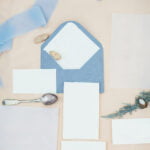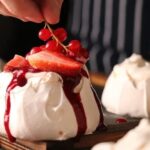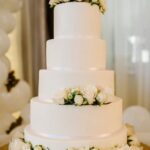Are you looking to elevate your cake decorating skills? Learn how to decorate a cake with edible fabric, a unique and versatile technique that adds texture and creativity to your creations. Edible fabric is a thin, flexible sheet made from ingredients like fondant or sugar paste that can be used to cover, wrap, or drape over cakes for a stunning and professional finish.
Edible fabric offers decorators the opportunity to achieve intricate designs and patterns that are difficult to achieve with traditional frosting or icing techniques. It provides a smooth and flawless surface for decorating, allowing for seamless application of various designs and textures. Whether you are aiming for a sleek modern look or a whimsical theme, edible fabric can help bring your creative vision to life on your cakes.
In this article, we will guide you through the process of decorating a cake with edible fabric from start to finish. From choosing the right edible fabric for your design to troubleshooting common issues that may arise during the decorating process, we will provide you with all the tips and tricks you need to create a masterpiece. Get ready to impress your friends, family, and clients with your newfound skills in cake decorating using edible fabric.
Choosing the Right Edible Fabric
When it comes to decorating a cake with edible fabric, choosing the right material is crucial to achieving a beautiful and visually appealing result. Edible fabric is typically made from ingredients like sugar, starch, and food coloring, creating a thin and flexible sheet that can be easily manipulated to adorn cakes in various ways. There are several factors to consider when selecting the best edible fabric for your cake design.
Consider the Theme and Design of Your Cake
The first step in choosing the right edible fabric for your cake is to consider the overall theme and design you want to achieve. Are you going for a sleek and modern look, or do you prefer a more whimsical and colorful design? Different types of edible fabric are available in various colors, patterns, and finishes, so it’s essential to choose one that complements your cake’s aesthetic.
Quality of the Edible Fabric
Another important factor to consider when selecting edible fabric for cake decorating is the quality of the material. Opt for high-quality edible fabric that is not only safe for consumption but also easy to work with. The texture of the edible fabric should be pliable but sturdy enough to hold its shape once applied to the cake. Avoid thin or brittle edible fabric that may tear or break apart during application.
Compatibility With Your Decorating Techniques
Lastly, ensure that the edible fabric you choose is compatible with your chosen decorating techniques. Some edible fabrics may be better suited for certain methods of application, such as wrapping around tiers or cutting into intricate shapes.
Consider how you plan to use the edible fabric on your cake and select a material that will work well with your intended design. By carefully considering these factors, you can choose the best edible fabric for your cake decorating project and create a stunning masterpiece that will impress any crowd.
Preparing the Cake
When preparing a cake for decorating with edible fabric, it is essential to start with a sturdy and well-baked base. The cake should be cooled completely before any decorations are applied. It is also crucial to level the cake layers to ensure a flat surface for the edible fabric to adhere smoothly. Leveling can be done using a sharp knife or a cake leveler tool.
Crumb Coating
Before applying the edible fabric, it is recommended to do a crumb coat on the cake. A crumb coat involves applying a thin layer of frosting all over the cake to seal in any loose crumbs. This helps in achieving a clean and professional look when decorating with edible fabric. After applying the crumb coat, allow it to set before moving on to adding the edible fabric.
Smooth Surface
For optimal results when decorating with edible fabric, ensuring that the surface of the cake is smooth is key. You can achieve this by using a bench scraper or offset spatula dipped in hot water to smooth out any imperfections in the frosting. A smooth surface will provide a better canvas for applying the edible fabric and will result in a more polished final look.
Size and Shape
Consider the size and shape of your cake when planning how to decorate it with edible fabric. Cutting the edible fabric slightly larger than needed allows for easier handling and adjustment while placing it on the cake. Additionally, choosing appropriate shapes and designs of edible fabric that complement the overall theme of your cake will enhance its visual appeal. By taking these factors into account during preparation, you can create a beautifully decorated cake using edible fabric effortlessly.
Applying the Edible Fabric
Before you begin applying the edible fabric, make sure that your cake is properly prepared. Ensure that the surface of the cake is smooth and clean, as any bumps or imperfections may affect how the edible fabric adheres to the cake. If needed, you can trim the edges of the cake to create a more even surface for applying the fabric.
To apply the edible fabric, start by measuring and cutting it to fit the desired area on your cake. Carefully lift the cut piece of edible fabric and gently lay it onto the surface of the cake.
Use a smooth tool like a fondant smoother to press down on the fabric, starting from the center and working your way outwards to remove any air bubbles or wrinkles. It’s essential to work slowly and carefully during this process to ensure a seamless application.
Once you have successfully applied the edible fabric to your cake, you can further enhance the design by adding additional decorations such as piping details, fondant accents, or edible paints. These extra touches will complement the edible fabric and create a visually appealing and cohesive look for your finished masterpiece.
| Key Steps in Applying Edible Fabric | Details |
|---|---|
| Prepare Cake Surface | Smooth out any imperfections on the cake surface before applying edible fabric |
| Cut and Position Fabric | Measure and cut edible fabric to fit desired area; carefully position onto cake surface |
| Smooth Application | Use a fondant smoother tool to press down on fabric gently starting from center for seamless application |
Adding Details
When it comes to decorating a cake with edible fabric, adding details can take your creation to the next level. While edible fabric itself can make a stunning statement on a cake, combining it with other decorations can truly enhance the overall design. Here are some ideas and tips on how to add details alongside the edible fabric for a show-stopping cake:
- Fresh Flowers: Fresh flowers can beautifully complement the soft texture of edible fabric on a cake. Choose edible flowers that match the color scheme of your design and carefully place them around the edges or as a focal point on top of the cake.
- Fondant Accents: Fondant is another versatile medium that can be used to create intricate decorations on a cake. Consider adding fondant bows, ribbons, or sculpted figures that coordinate with the edible fabric pattern for a cohesive look.
- Metallic Elements: Incorporating metallic elements like edible gold or silver leaf, dragees, or shimmer dust can add a touch of elegance and glamour to your cake design. Use them sparingly to highlight specific areas or create accents that complement the edible fabric.
By combining different textures, colors, and elements, you can create a visually captivating cake that is sure to impress any crowd. Remember to balance the additional decorations with the edible fabric so that they work together harmoniously to elevate the overall aesthetic of your masterpiece.
With these ideas in mind, feel free to experiment and get creative with how you incorporate various details alongside the edible fabric on your cakes. Whether you opt for floral arrangements, fondant embellishments, or metallic accents, each element adds depth and interest to your design. The key is to strike a balance between all these components to ensure that your decorated cake looks cohesive and visually appealing from every angle.
Remember that when it comes to decorating cakes with edible fabric and additional details, there are no strict rules – let your imagination run wild. Embrace the opportunity to showcase your creativity and skill by experimenting with different combinations until you achieve a result that is both visually stunning and deliciously unforgettable.
Troubleshooting
When decorating a cake with edible fabric, it is not uncommon to encounter some issues along the way. However, with the right knowledge and troubleshooting techniques, these problems can easily be resolved. Here are some common issues you may face when decorating with edible fabric and how to fix them:
1. Wrinkles or Folds: One common issue that individuals face when applying edible fabric to a cake is wrinkles or folds in the fabric. To prevent this from happening, make sure to smooth out the fabric gently as you apply it to the cake. If wrinkles do occur, you can try using a small brush dipped in water to carefully smooth them out.
2. Edible Fabric Not Adhering Properly: Sometimes, the edible fabric may not adhere properly to the cake surface, causing it to lift or detach. To fix this issue, consider brushing a thin layer of clear piping gel or corn syrup on the back of the fabric before applying it to the cake. This extra layer will help secure the fabric in place.
3. Uneven Application: Another challenge that decorators may face is achieving an even application of edible fabric on a cake. To ensure a smooth and uniform look, take your time while applying the fabric and use a gentle touch. If needed, you can use a fondant smoother or your hands to press the fabric against the cake gently until it adheres properly.
By addressing these common issues when decorating with edible fabric and utilizing these troubleshooting tips, you can create a stunning cake design without any hiccups along the way. Remember to practice patience and precision during the decorating process for best results.
Showcasing Your Masterpiece
When it comes to showcasing a cake that has been beautifully decorated with edible fabric, presentation plays a crucial role in highlighting the design and craftsmanship. One of the best ways to display your edible fabric adorned cake is by using a cake stand or pedestal.
Elevating the cake not only adds visual appeal but also makes it more visible to everyone at the event. Additionally, you can consider incorporating decorative elements such as fresh flowers, fruits, or edible glitter around the base of the cake stand to further enhance the overall look.
Another important aspect of presenting a cake decorated with edible fabric is lighting. Proper lighting can make all the difference in highlighting the intricate details and textures of the fabric. Soft, ambient lighting works best for showcasing cakes as it creates a warm and inviting atmosphere while ensuring that all the design elements are properly illuminated. Avoid harsh overhead lighting that may cast shadows on your masterpiece and detract from its beauty.
Furthermore, consider the backdrop against which you will be presenting your cake decorated with edible fabric. Opt for a clean and simple background that allows the cake to be the focal point. A plain tablecloth or a neutral-colored wall can serve as an ideal backdrop for showcasing your creation. By keeping the background minimalistic, you ensure that all attention is directed towards your beautifully adorned cake with edible fabric.
| Showcasing Tip | Description |
|---|---|
| Use Elevated Stands | Displaying cakes on elevated stands makes them more visible and visually appealing. |
| Consider Lighting | Soft ambient lighting highlights intricate details of edible fabric decorations. |
| Mind Background Details | Choose simple backdrops to let your decorated cake shine as the focal point. |
Storage and Preservation
When it comes to decorating a cake with edible fabric, knowing how to store it properly is essential to maintaining its quality and freshness. Edible fabric is a delicate material that can be affected by the environment, so taking the right steps to store your decorated cake can make a big difference in how long it stays looking its best.
One key factor to consider when storing a cake decorated with edible fabric is temperature. It’s important to keep the cake in a cool, dry place away from direct sunlight or heat sources. Extreme temperatures can cause the edible fabric to melt or become discolored, so finding a spot in your home that is consistent in temperature is ideal.
Another important aspect of storing a cake with edible fabric is protection from moisture. Excess moisture can cause the edible fabric to lose its shape or become soggy, so covering the cake with a food-safe plastic wrap or placing it in an airtight container can help prevent this issue. Additionally, avoid storing the cake in the refrigerator unless absolutely necessary, as condensation can form on the edible fabric and affect its appearance.
Conclusion
In conclusion, decorating a cake with edible fabric can add a unique and elegant touch to any special occasion. Edible fabric is a versatile and creative option for those looking to take their cake decorating skills to the next level. From creating intricate designs to adding texture and dimension, edible fabric offers endless possibilities for customization.
Choosing the right edible fabric is crucial in achieving the desired look for your cake design. Whether you opt for pre-made sheets or decide to create your own using edible paper and food coloring, selecting high-quality materials will ensure a professional finish. Preparing the cake properly, applying the edible fabric with precision, and adding complementary decorations are essential steps in creating a visually stunning masterpiece.
As you embark on your journey of learning how to decorate a cake with edible fabric, don’t be discouraged by common issues that may arise during the process. Remember that practice makes perfect, and troubleshooting challenges will only help you improve your skills.
Lastly, showcasing your final creation with pride and storing it properly to maintain its quality and freshness are key elements in ensuring that your decorated cake leaves a lasting impression on all who behold it. With dedication, creativity, and attention to detail, decorating cakes with edible fabric can truly be an art form worth mastering.
Frequently Asked Questions
What Edible Material Is Used for Decorating Cakes?
Edible materials commonly used for decorating cakes include fondant, gum paste, marzipan, and edible paper. Fondant is versatile and can be molded into various shapes and designs. Gum paste is great for creating intricate details. Marzipan is often used for sculpting figures. Edible paper, such as wafer paper or frosting sheets, allows for detailed printed designs on cakes.
How Long Does Edible Fabric Last?
The longevity of edible fabric depends on the specific type of material used and how it is stored. Generally, edible fabric like icing sheets can last up to a year if kept in a cool, dry place away from direct sunlight and humidity. It’s important to check the expiration date on the packaging for guidance on shelf life.
How Do You Apply Edible Icing Sheets to Buttercream?
Applying edible icing sheets to buttercream is a relatively straightforward process. Start by trimming the icing sheet to fit the size of your cake or desired placement. Smooth out any air bubbles by gently pressing down on the sheet with clean hands or a smoothing tool.
The moisture from the buttercream will help adhere the icing sheet to the cake seamlessly. Be careful not to oversaturate the sheet with excess moisture that could cause it to dissolve or lose shape.

Welcome to my blog about home and family. This blog is a place where I will share my thoughts, ideas, and experiences related to these important topics. I am a stay-at-home mom with two young children. I hope you enjoy reading it! and may find some helpful tips and ideas that will make your home and family life even better!





